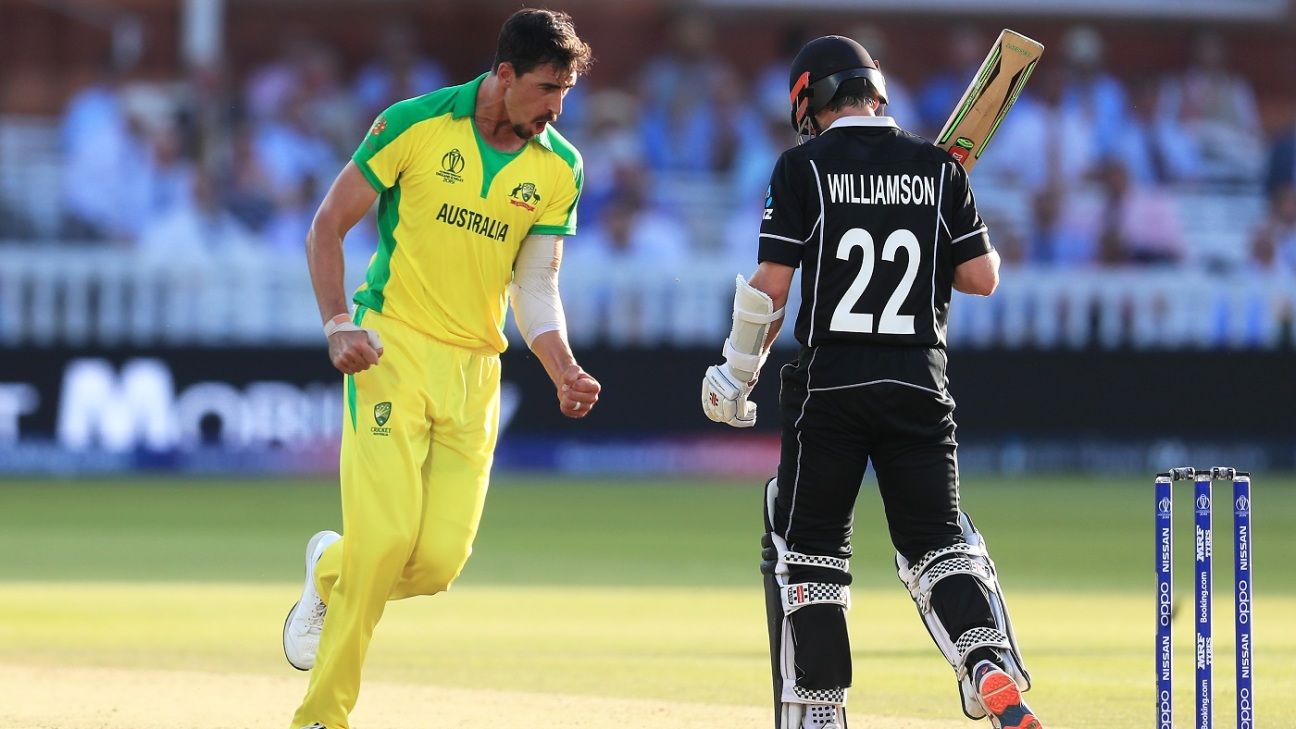The run-rate dip
Given how ODI run rates had soared in England in the four years leading up to this World Cup 2019 – it was 6.07 in the period between the last two World Cups – people generally assumed that the scoring rate in this edition would leave behind previous ones by some distance. Well, it didn’t pan out that way, thanks to the pitches and the conditions.
The run rate in this tournament was 5.59, marginally lower than the 5.65 that was achieved in the 2015 edition in Australia and New Zealand. It also broke a 12-year sequence of each World Cup exceeding the rate of the previous edition, which had been happening since 2007.
Bat first to win
Chasing was generally the preferred option for teams in England in the four years leading up to this tournament: the win-loss ratio for teams batting first was 20-32 (0.625). In the World Cup, it flipped completely: teams batting first won 28 and lost 15, a ratio of 1.866, which is a three-fold improvement for the team batting first. It is also a significant departure from ODI trends over the last four years since World Cup 2015.
The difference was especially stark in the second half of the tournament, when the pitches generally became slower and the weather cleared up. In the first 21 completed matches, the teams batting first only had a 11-10 win-loss record; in the next 23 matches, it changed drastically to 17-5. The 1987 World Cup is the only one in which the team batting first had a better win-loss ratio.
The captains winning the toss caught on: in the first half of the tournament, only four times did teams win the toss and bat; in the second half it happened 18 times in 23 games, and it yielded a 13-4 win-loss (apart from a tie). Overall, the 15-6 win-loss record for the team winning the toss and batting is the most skewed among all World Cups.
The middle overs are generally when spinners come into their own, but they struggled even during that phase in World Cup 2019. Their average of 50.64 and economy rate of 5.30 between overs 11 and 40 were the worst in this phase in World Cup history.
Top-class top orders
The top three batsmen (Nos. 1-3) in the batting line-ups of all teams scored 51% of the total runs off the bat in the entire tournament, compared to 43% in 2015, 48% in 2011 and 44.5% in 2007. Among the 11 batsmen who scored 400-plus runs in the tournament, only one – Ben Stokes – batted outside the top three. The top three batsmen averaged 43.24 in 2019, five more than they have in any other World Cup.
Led by Shakib Al Hasan, Kane Williamson, Babar Azam, Joe Root and Virat Kohli, the No. 3s generally had a tournament to remember. They averaged 52.47, their highest by far in any World Cup; their next best is 43.40, in the 1987 edition. In contrast, No. 4s didn’t have such a memorable tournament, averaging 34.97, their lowest in the last four editions.
Starc and Co dominate
Mitchell Starc’s 27 wickets broke the record for most wickets in a single World Cup, while Mustafizur Rahman, Trent Boult, Mohammad Amir and Shaheen Afridi were among the top ten wicket-takers, making this an outstanding tournament for left-arm fast bowlers. They took 136 wickets, their best haul ever in a World Cup, and two more than their tally in 2015.
In terms of averages too, they were clearly better than their right-arm counterparts: the left-arm seamers averaged 25.38, compared to 31.95 by the right-arm fast bowlers.
Captains lead the way
Four captains who scored 300-plus runs at 50-plus averages in this World Cup; in previous editions, there have never been more than two captains who did so.
Williamson, Aaron Finch, Kohli and Faf du Plessis were outstanding with the bat, while Eoin Morgan and Dimuth Karunaratne made vital contributions too. Overall, the captains averaged 42.94, the second highest in any World Cup: in 1975, they averaged 49.14.


















